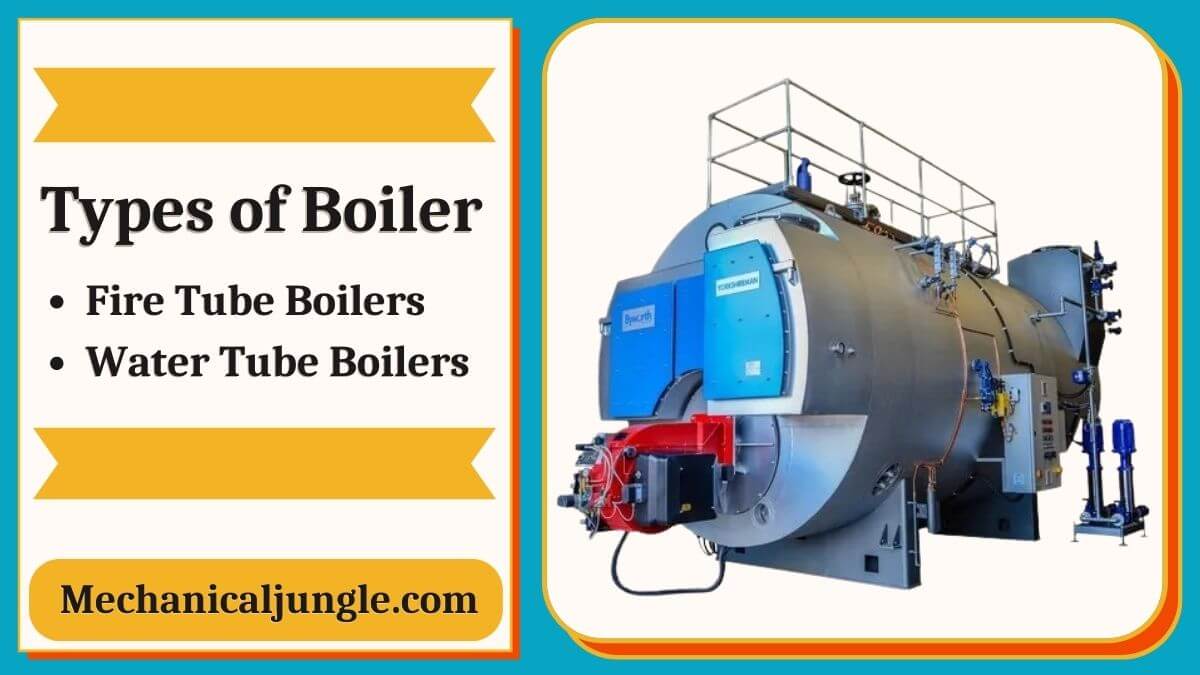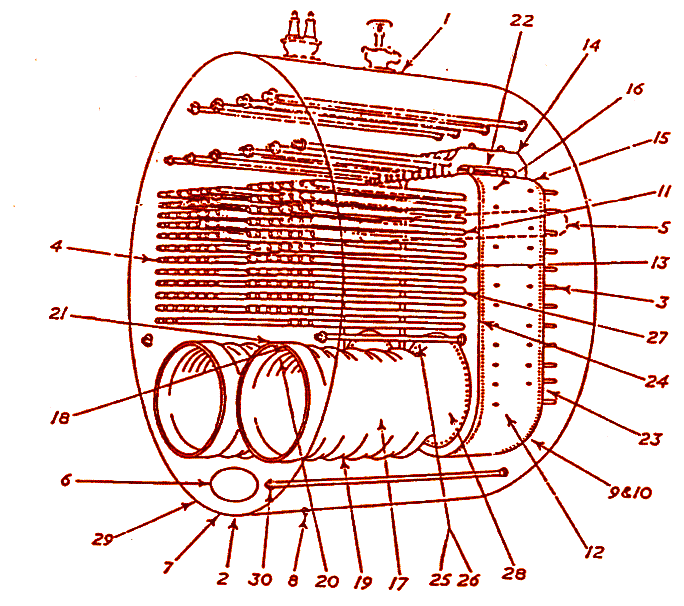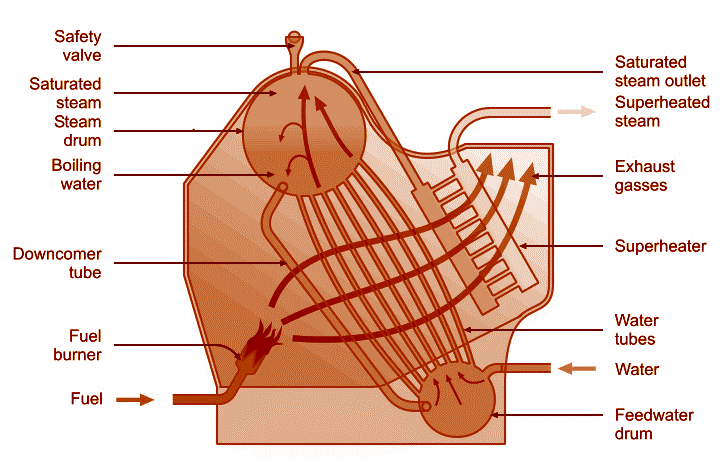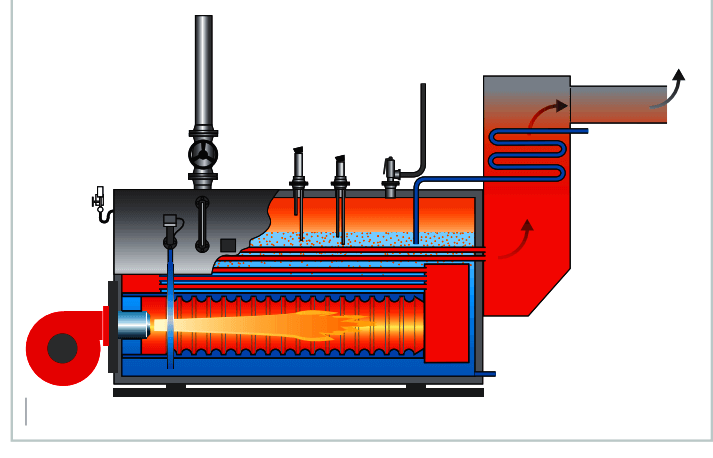What Is Boiler?
A boiler is a closed vessel in which fluid is heated. The fluid does not necessarily boil. The heated or vaporized fluid exits the boiler for use in various processes or heating applications, including water heating, central heating, boiler-based power generation, cooking, and sanitation.
How Boiler Work?
- A boiler can be defined closed vessel in which steam is produced from water by the combustion of fuel.
- The boiler is used in many industries such as steam power generation, in Chinese industries, for sizing and bleaching, etc., in the textile industry, and in many other chemical industries. Previously it was mainly used to generate electricity in steam engines.
- A boiler is simply an enclosed vessel that boils water and eventually transforms it into steam that is used for heating rooms and heavy fuel oils on ships.
Boiler Operation
- The course reviews appropriate boiler startup and shutdown processes as well as the responsibilities of the original operator.
- Students will be made aware of unusual and emergency situations arising during the boiler operation.
Course Objectives Include:
- Identify basic startup processes for boiler system operation.
- Describe the work done in the pre-start check
- Describe the work done in a system purse
- Describe the work done during the light off of the burner
- Identify the results of the heat-up phase.
- Describe the work done while starting the feedwater flow
- Explain the purpose of each step of the shutdown process
- Identify the responsibilities of the boiler operator.
- Identify unusual and emergency situations that arise during boiler operation.
Boiler Diagram
Types of Boiler
There are two types
- Fire Tube Boilers.
- Water Tube Boilers.
#1. Fire Tube Boilers
Hot flux gases flow inside tubes that submerge in water within a shell.
- Steam output up to 14 tons/hour
- Pressure up to about 10 bar
- Usually rated in H.P.
- Can meet wide and sudden load fluctuations due to large water content
Wet Back Design
There is a water wall behind the boiler in the area where the combustion gases from the reverse direction to enter the tube.
Dry Back Designs
Instead of a water wall, a refractory is used in the back. Internal maintenance is simple, but refractory replacement is expensive and the termination, gauging, and cracking of the tube at the entrance to return the gas passage often cause problems.
Advantages of Fire-Tube Boilers
- Lower initial cost
- Few controls
- Simple operation
Disadvantages of Fire-Tube Boilers
- Drums are exposed to heat, increasing the risk of explosion
- Large amounts of water, resulting in poor circulation
- Limited steam pressure and evaporation.
#2. Water Tube Boilers
Water flows from tubes surrounded by hot combustion gases in a tap.
- Usually rated in tons of steam/hour
- H.P. Is used for. Steam
- High capacity
- In recent years, interest in high-temperature hot water heating systems for institutional, industrial, and commercial plants has revived. By increasing the temperature and pressure of hot water and increasing the size of the generator, Some advantages derive from previously used low-pressure steam heating systems.
- In other cases, special forced circulation boilers are designed, consisting of several rows of tubes without a steam drum. In another type, heat is supplied by steam from a standard type of boiler that heats water in a direct contact heater. This is called the Cascade System.
Advantages of Water Tube Boilers
- Rapid heat transmission
- Rapid response to steam demand
- High efficiency
- Safer than firewater boilers
Disadvantages of Water Tube Boilers
- More control than fire tube boilers
- High initial cost
- More complex to operate
What Is Steam Boiler?
- A steam boiler a device used to create steam using heat energy in water.
- Although the definitions are somewhat flexible, it can be said that older steam generators were commonly called steam boilers and operate at low to medium pressures (1-300 psi or 6.895–2,068.427 kPa), but at pressures, this is more common.
How Does a Steam Boiler Work
- Steam boilers are very complex, but I tried to explain how they work easy to understand way. There are two main designs of steams boilers water tubes and flame tubes/smoke tubes (otherwise known as shell boilers).
- In a water tube boilers, water is contained in a tube that is surrounded by hot gas. In shell boilers, hot gas flows through ducts that are surrounded by water.
- In both cases, the hot gas is capable of heating water. A water tube boiler is capable of reaching a pressure of about 200 bar, while shell boilers will reach a maximum pressure of about 25 bar.
- A shell boiler can produce 26 tons of steam per hour, making it sufficient for industrial use. The boiler itself is a large horizontal cylinder with insulation around it.
- The boiler will be filled with 75 percent of the water, leaving a 25 percent difference for steam.
- Both the water tube and the shell boiler operate through a three-pass system, although the following information only applies to shell boilers. Within the boilers, the flame tubes sit in water.
- The hot gas enters the flame tubes (first pass) and continues through an internal reversing chamber that reverses the flue gases, allowing them to move into the smoke tube (second pass). An external reversible chamber reverses the flue gas a second time, allowing it to move to another smoke tube (third pass).
- Going as if the gas is passing through the boiler back and forth, heating the water makes it move. Once the gas passes the third pass, it exits the chimney.
- The hot water is then converted into steam. The steam can be carried around the system through pipes, and hot water will be pumped from the tap.
- Any steam that condenses within the pipe will be returned to the boiler, where it is reheated. Some water may be lost over time and will have to be reabsorbed.
FAQs
What is a boiler?
A boiler is a closed vessel in which fluid is heated. The fluid does not necessarily boil. The heated or vaporized fluid exits the boiler for use in various processes or heating applications, including water heating, central heating, boiler-based power generation, cooking, and sanitation.
How does a boiler work?
A boiler produces steam from water by the combustion of fuel. The steam is used for heating, power generation, and other industrial processes. In essence, it transforms water into steam by heating it within an enclosed vessel.
What are the types of boilers?
There are two main types of boilers:
- Fire Tube Boilers: Hot gases flow inside tubes submerged in water.
- Water Tube Boilers: Water flows inside tubes surrounded by hot gases.
What are the advantages and disadvantages of Fire Tube Boilers?
- Advantages:
- Lower initial cost
- Few controls
- Simple operation
- Disadvantages:
- Drums are exposed to heat, increasing the risk of explosion
- Large amounts of water, resulting in poor circulation
- Limited steam pressure and evaporation
What are the advantages and disadvantages of Water Tube Boilers?
- Advantages:
- Rapid heat transmission
- Rapid response to steam demand
- High efficiency
- Safer than fire tube boilers
- Disadvantages:
- More control than fire tube boilers
- High initial cost
- More complex to operate
What is a steam boiler?
A steam boiler is a device used to create steam using heat energy in water. It typically operates at low to medium pressures (1-300 psi or 6.895–2,068.427 kPa).
How does a steam boiler work?
Steam boilers heat water through either water tubes or shell (flame/smoke) tubes. In water tube boilers, water is contained in tubes heated by surrounding hot gas. In shell boilers, hot gas flows through ducts surrounded by water. The heat converts water into steam, which is then used in various applications.
What is the difference between fire tube and water tube boilers?
In fire tube boilers, hot gases flow inside tubes submerged in water. In water tube boilers, water flows inside tubes surrounded by hot gases. Fire tube boilers are simpler and cheaper but have lower efficiency and capacity. Water tube boilers are more complex and expensive but have higher efficiency and capacity.
What are the operational steps for starting and shutting down a boiler?
Operational steps include:
- Identifying basic startup processes
- Conducting pre-start checks
- Performing system purge
- Lighting off the burner
- Managing the heat-up phase
- Starting the feedwater flow
- Following shutdown procedures
- Managing unusual and emergency situations during operation







